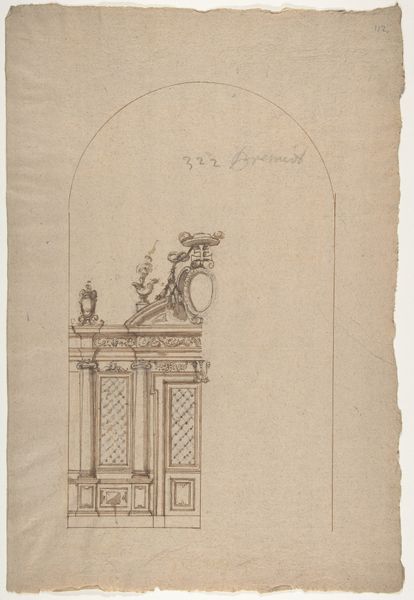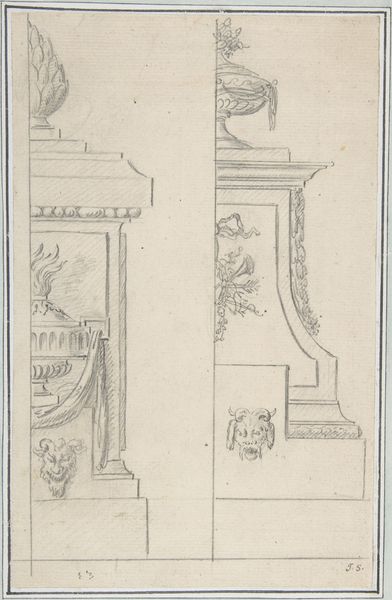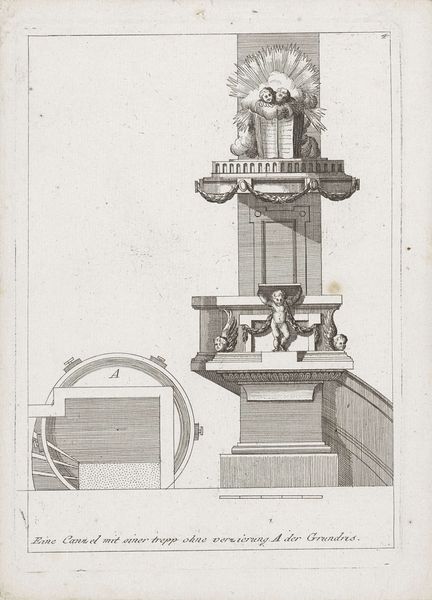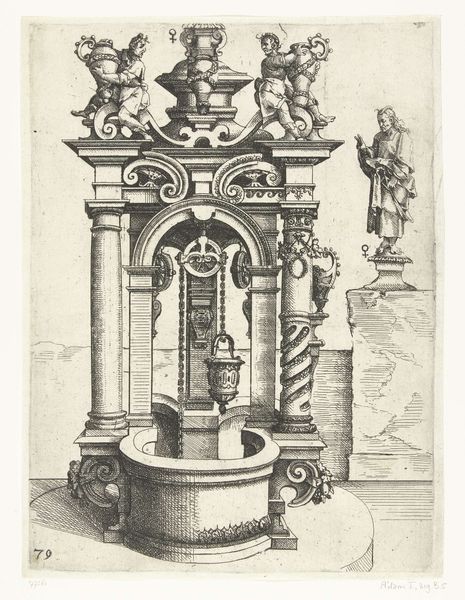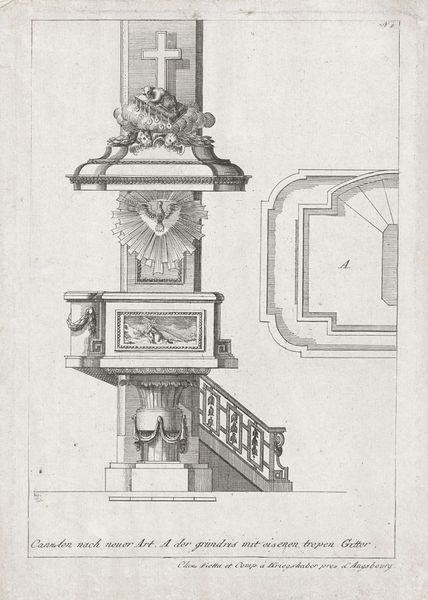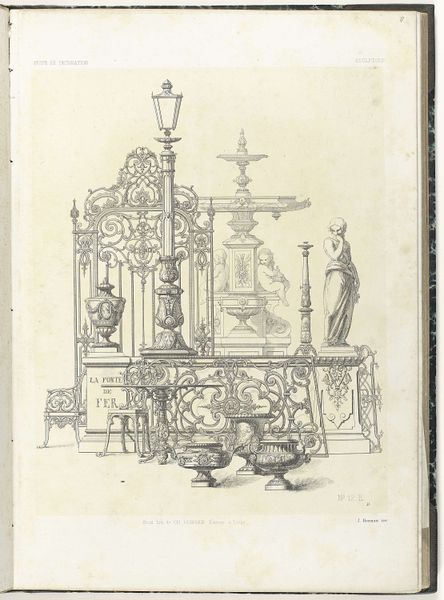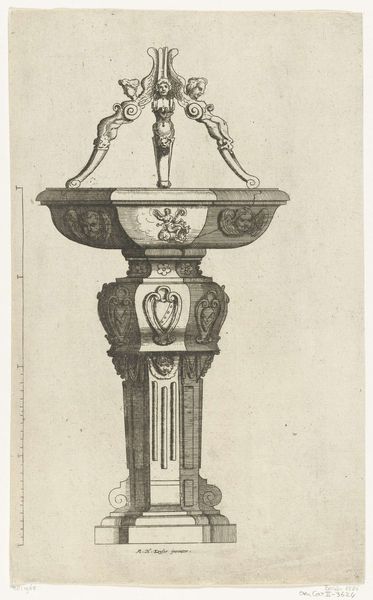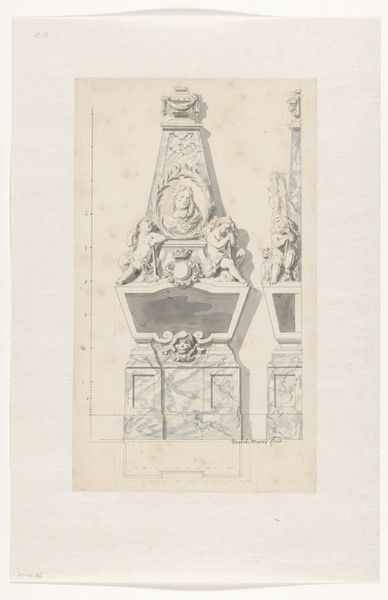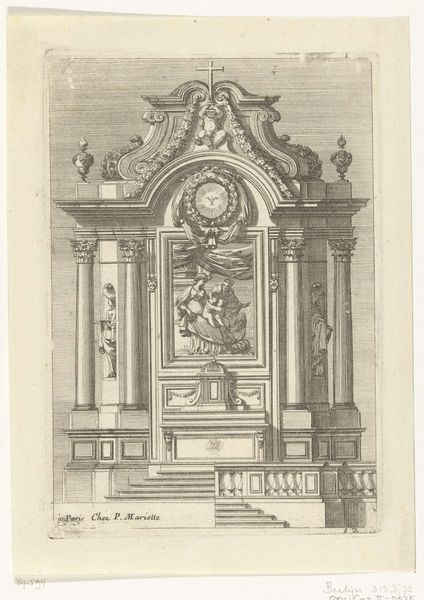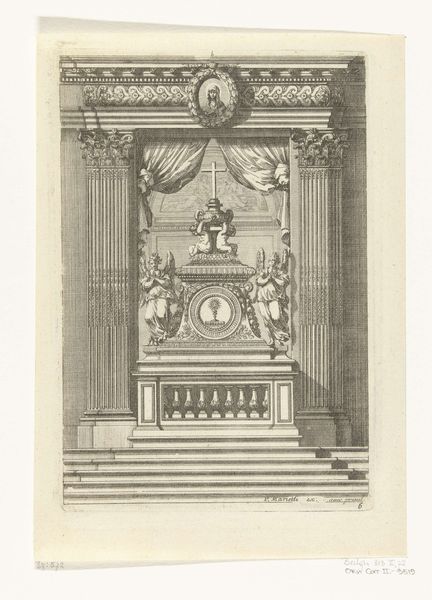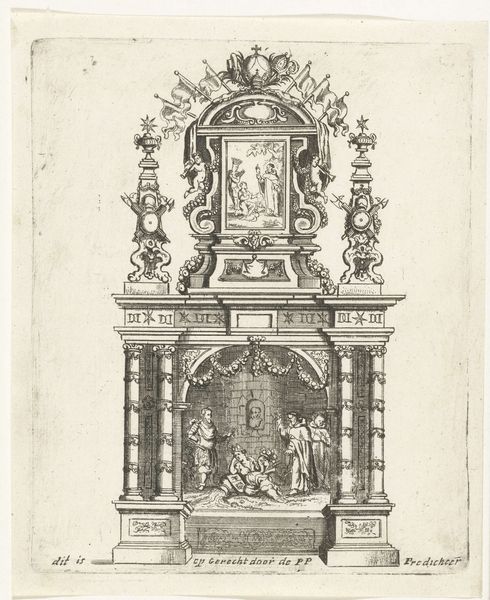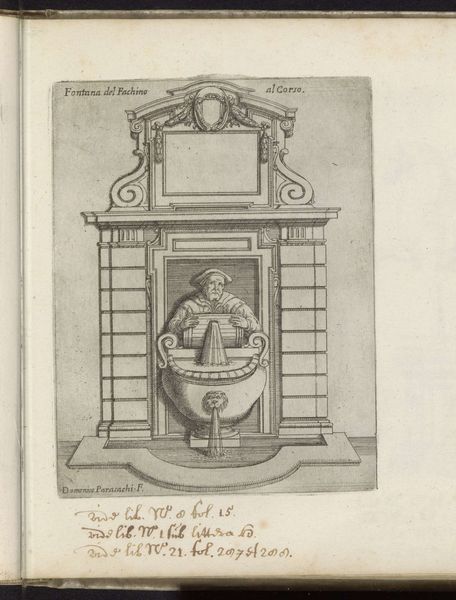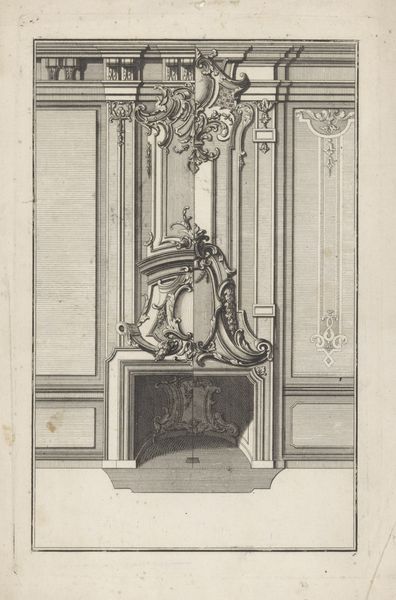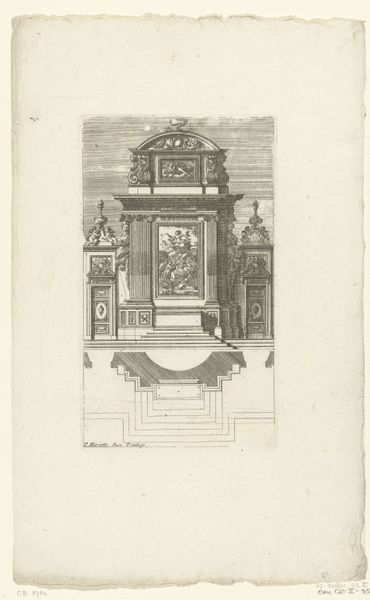
drawing, ink, pen, engraving, architecture
#
drawing
#
baroque
#
pen drawing
#
ink
#
pen
#
cityscape
#
history-painting
#
engraving
#
architecture
Dimensions: height 194 mm, width 150 mm
Copyright: Rijks Museum: Open Domain
Curator: Look at the incredible detail in this drawing! We're looking at Domenico Parasacchi’s "Fountain for the Swiss Guard in the Vatican City," created in 1637. It's a baroque piece done with pen and ink. Editor: It’s stark. The black ink against the light background gives it a high contrast and formal quality, wouldn't you agree? Even in this small format, the architecture has a monumental feeling. It's like a statement of power. Curator: Exactly. The baroque style lends itself to grandeur, and the fountain itself, depicted in such detail, would have been a significant public symbol. Consider its purpose, placed in the Vatican City to serve the Swiss Guard. These were the military forces, essentially mercenaries, that became a powerful visual emblem of papal authority. This fountain speaks to the politics of imagery. Editor: So the fountain isn't just a source of water; it is about dominance. And who is allowed access? How is the control of water analogous to the control of the city? You could even look at the naked boy child within it in terms of a kind of subjugation to larger structural powers, perhaps reflecting societal expectations about innocence or purity. The setting, and the fact it serves soldiers, casts the imagery in a more pointed, maybe even problematic, light. Curator: Precisely. The historical context shapes how we understand even the seemingly innocent details, especially because this kind of architectural drawing also became a promotional tool. Designs like these served to both document and also project prestige. Editor: So its impact isn't limited to those who physically interacted with the fountain. This image, this engraving, became a vehicle for diffusing power more broadly. Curator: A way to create a narrative. And because it circulated as a print, it could inform architecture far beyond Rome, influencing tastes and establishing what powerful design *looked* like. Editor: Looking at it now, it prompts a deep dive into societal roles, authority, access... It transforms how I read similar pieces now, as a contemporary viewer. Curator: It reveals how power manifests materially through culture. And it shows the enduring resonance of what seems like a simple architectural study.
Comments
No comments
Be the first to comment and join the conversation on the ultimate creative platform.
